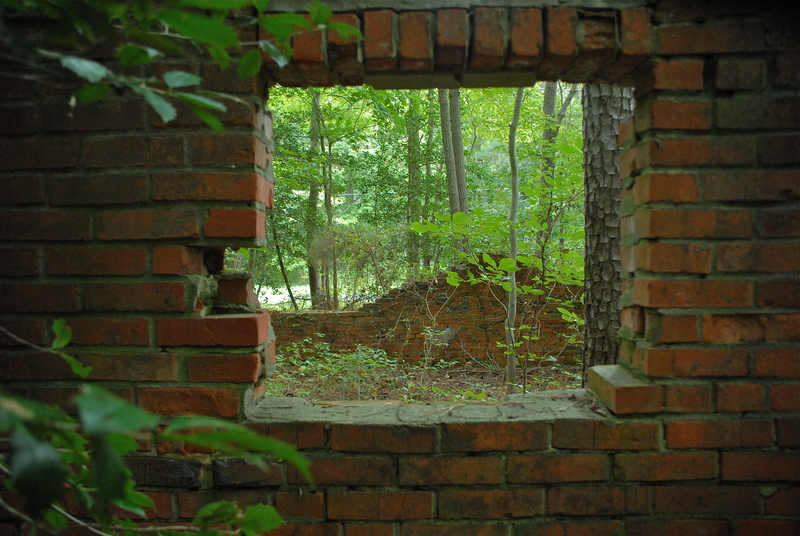At least two state agencies say all or part of a wooded parcel at a historic Milton brickyard site should be preserved in its natural state.
That view is opposed by developer H.P. Layton Properties, whose proposal for the 53-acre tract along the Broadkill River meets all requirements for a residential development in an AR-1, agricultural-residential, zone, the developer says.
The project, Brickyard Landing, has resurfaced for public debate after county officials tabled the matter last September. Sussex County Planning and Zoning Commission required the project be reviewed by state agencies.
H.P. Layton Properties has applied to develop the parcel on Round Pole Bridge Road off Cave Neck Road into a 49-lot subdivision.
Planning and zoning commissioners requested the developer submit the project to the Preliminary Land Use Process (PLUS) coordinated by the Office of State Planning Coordination. Because the project was one lot shy of the 50 required for state scrutiny, it was not reviewed before the developer filed a subdivision application with the county.
Although rarely exercised, planning and zoning has the authority to require a developer to go through the state review process. The commission then had to delay the public hearing until after the developer had time to respond to comments from state agencies contained in the PLUS report.
The commission deferred on a decision.
Jim Fuqua, attorney for the applicant, said many of the state’s comments were recommendations or suggestions and not required under state code. “We’ve addressed all concerns raised in the PLUS comments,” he said during the March 24 hearing.
He said the AR-1, agricultural-residential, zoning is appropriate for a single-family home subdivision; the density would be less than permitted by the county’s land-use plan – less than one lot per acre; public water and sewer would be provided; and the parcel was in a growth area designated as Milton town center.
Debate over historic importance
Land for the proposed subdivision contains one of the last remaining 19th and early 20th century brickyard operations in the region. State officials said the parcel along the Broadkill River also contains a former section of the Queen Anne’s Railroad and a river landing providing access to a sailors’ path that ended in Milton.
According to state officials, the parcel contains the remains of a brick kiln, loading ramp, long brick building that probably housed brick-making equipment and a drying shed, two houses built with bricks from the kiln and two large clay borrow pits. The brick factory operated from 1887 to 1929.
“This particular parcel has important historical resources as well as environmental constraints that need to be seriously considered before approval of the existing plan,” wrote Connie Holland, director of the Office of State Planning Coordination.
In its response to state agencies’ comments, the developer downplayed the historic relevance of the parcel.
“It is the owner’s/developer’s position that the project is not a historic site suitable for preservation,” wrote Ken Kullman, project manager. “The ruins associated with the brick-making operation are unstable, unsafe and overgrown with vegetation.”
Kullman wrote that the owner would provide access to the property for state archaeologists to document the brickyard, and it would be appropriate for a historic marker to be placed at the site.
Edward Lauhay, an environmental consultant hired by the applicant, said there is no evidence of a landing or sailors’ path on the parcel. “Physically, there is no way to walk along the edge of the river,” he said. “It’s not borne out by the geographic features you would have to cross.”
He said the 700 feet of Broadkill River shoreline on the parcel is lined with 200 to 300 feet of wooded wetlands. “There is no place where a landing could have occurred,” he said.
He said brick factory ruins on the parcel are in a state of disrepair and can’t be restored.
In his PLUS review comments, Terrence Burns of the State Historic Preservation Office, wrote that aerial photographs from 1937 show evidence of a road to a landing on the Broadkill River and traces of the sailors’ path.
Lauhay said he reviewed the same 1937 photographs and could find no evidence of a landing on the Brickyard Landing property, but it appears there could have been a landing about one-half mile west of the parcel. He said he could also not find any evidence of a sailors’ path.
“No physical evidence of any shoreline path has been observed during our field investigations,” he wrote in his comments. “It is not possible that a path would have existed along the Broadkill shoreline on this property due to the presence of wetlands and streams.”
Others disagreed with Lauhay’s assumptions.
John Reed, who lives on Round Pole Bridge Road, said there is evidence of a landing on the property leading to the sailors’ path. “I can show you the pilings at low tide,” he said.
Mike Tyler, spokesman for Citizens Coalition in Lewes, referenced a Delaware history book that details the sailors’ path adjacent to the property, the Queen Anne’s Railroad and the brick-making operation that fired 200,000 bricks per month during a seven-month schedule.
“It’s hard to understand why the developer does not admit that this property is a historic site,” he said.
He said it’s important to preserve the brick-making history on the parcel. State officials said this site is the last surviving example in the state of a 19th to early 20th century brick-making factory.
Comments on buffers and trees
Lauhay said the entire parcel is forested, and the developer would take steps to make sure as many trees as possible are retained. State officials disagreed with the developer’s calculation that 16 acres of trees would be removed. “This calculation is clearly inaccurate given the site is entirely forested and 49 lots, associated roadways and stormwater management facilities are being proposed,” wrote Kevin Coyle of the Department of Natural Resources and Environmental Control.
Coyle also noted extensive grading would be required because of the topography of the terrain. In addition, residents are inclined to remove trees once they move in to make way for pools, play areas, sheds, etc., he wrote.
DNREC urged the applicant to preserve some or all of the trees on the parcel. The Office of Nature Preserves urged the developer to dedicate the parcel as a nature preserve and the Cultural Resource Office urged the developer to consider preservation of the north half of the parcel through the Nature Conservancy.
“If the state or federal government or another group desires to purchase this property for preservation, the owner/developer will entertain all offers at fair-market price,” wrote Kullman.
DNREC officials and the Nature Conservancy recommended a minimum 100-foot buffer from all wetlands; the developer has proposed 50-foot buffers.
Fuqua said the developer has gone beyond what is required by county code by providing minimum 50-foot buffers from the eight acres of federal and state wetlands – the county requires 50-foot buffers only from state wetlands.
A 30-foot buffer would be provided around the perimeter of the property, as county code requires.
Johnny Hopkins, who lives across from the proposed development, said because of runoff water issues along Round Pole Bridge Road, the buffer area should be widened from the proposed 50 feet. In addition, he said, the project should be downsized.
Tyler also said the project should be downsized to minimize effects on the environment and fit in with the surrounding area. “The parcel has historical significance with lots on unstable land that is unsuitable for development beyond the character of the adjacent community,” Tyler said.



















































